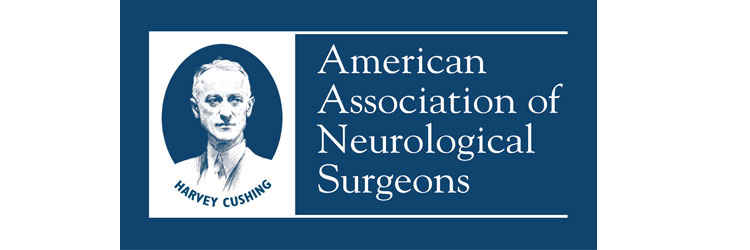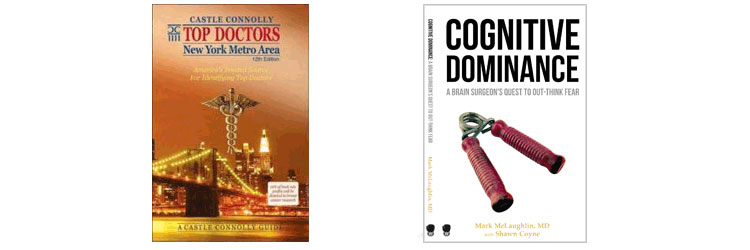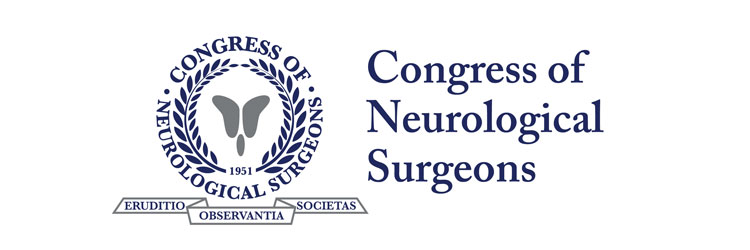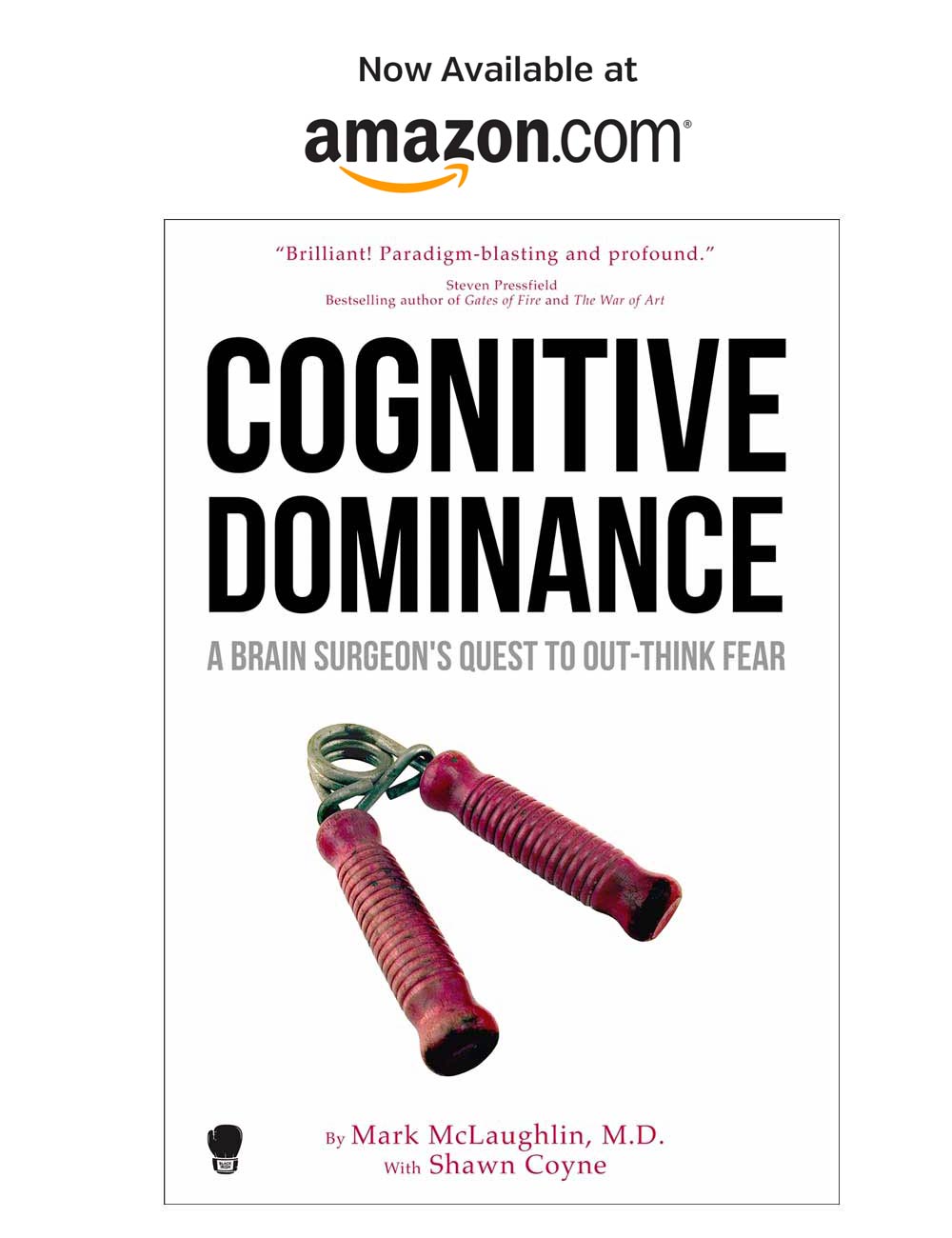Cervical and Lumbar Radiculopathy
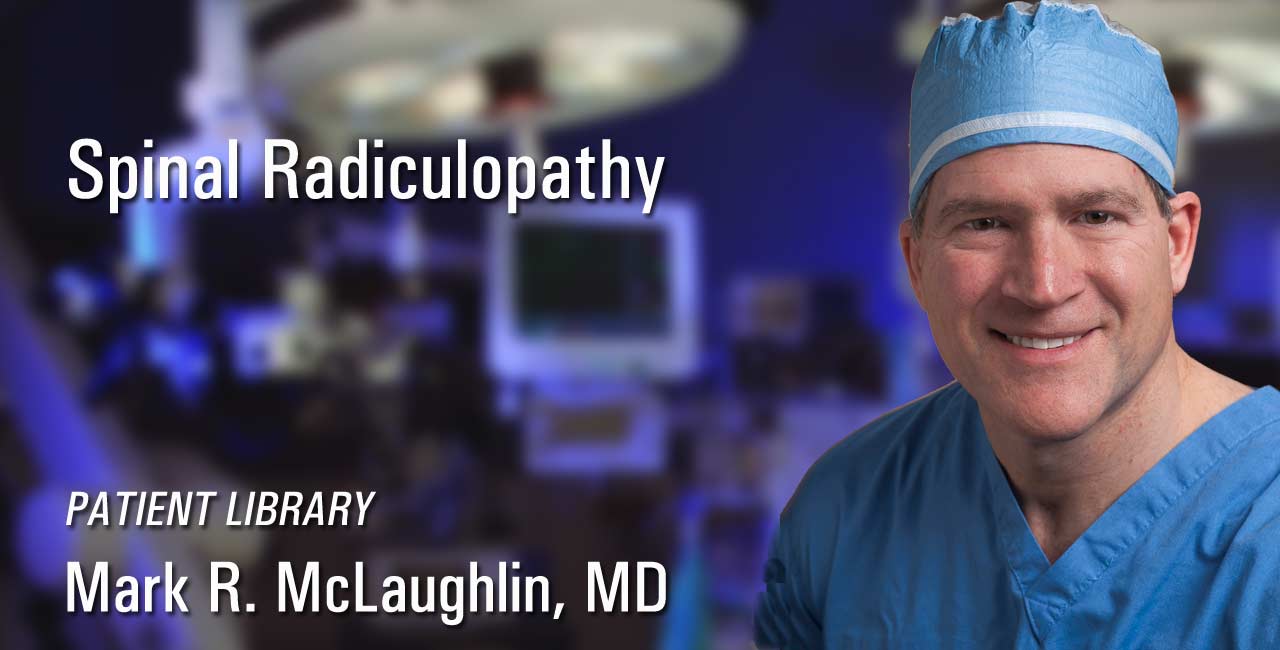
By Mark R. McLaughlin, MD, FACS, FAANS
Radiculopathy is a medical term that simply means irritation of a nerve root. It happens when something in the body is squeezing, pinching or leaning on a nerve, causing pain, weakness or numbness. We'll tell you about the different types of radiculopathy and the best ways to treat them.
What Causes Radiculopathy?
“Radiculopathy” comes from the Latin word radicula, which means “little root.” This condition pertains to the nerve roots in the upper back (cervical spine), mid-back (thoracic spine) and low back (lumbar spine).
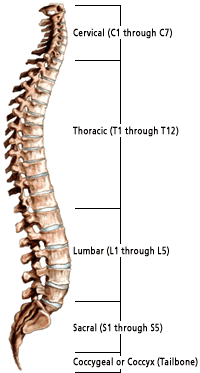
Our spine allows us to move and turn our heads, and bend and twist our bodies. Like any door hinge or mechanical part that we use over and over again, the spine suffers wear and tear over time.
When a bone in the spinal column—a vertebrae—becomes worn, it can form bone spurs that push against nerves in the spine, causing pain. Discs in the back—the “cushions” between the vertebrae—can bulge outside the spinal column and cause pain. As we get older, we’re more likely to have bone spurs or discs that impinge on spinal nerve roots.
Our nerves act as our body’s alarm system. When you put your hand too close to a hot stove, your nerves quickly send a signal to your brain, telling it to give you pain in your hand so you’ll take it away before it gets burned.
With radiculopathy, however, the nerves give the brain a false alarm. A person feels pain in their leg, hand, arm or side, but there’s really nothing wrong with those parts of the body—there’s something wrong with their spine.
A good example of this is a pinched nerve in the neck. When someone has this problem, they feel pain or numbness in their arm but the problem isn’t in their arm, it’s in their cervical spine (upper back).
Radiculopathy Symptoms and Treatments
Cervical Radiculopathy
Radiculopathy that occurs in the upper back and neck area is called cervical radiculopathy. This condition causes pain, weakness or numbness in the bicep, tricep and forearm as well as the neck, trapezius and interscapular area (between the shoulder blades).
The nerves that exit the cervical spine branch out to give movement and sensation to the muscles of the shoulders, arms, hands and fingers. When a nerve root in the cervical spine is irritated by compression or inflammation, pain can radiate along that nerve’s pathway and down into the arm and hand.
The most common causes of cervical radiculopathy are a herniated disc and spinal stenosis (narrowing of the spine). The American Academy of Orthopedic Surgeons explains that cervical radiculopathy can also be caused by "wear and tear" changes that occur in the spine as we age, such as arthritis. In younger people, it is most often caused by a sudden injury that results in a herniated disk.1
Thoracic radiculopathy
Thoracic radulopathy, which occurs in the mid-back, causes pain that can be misleading, even to physicians. Since thoracic nerves don’t extend out to the limbs, but into the torso, this type of radiculopathy causes pain or numbness in the ribs, abdomen or side.
When this occurs, the painful symptoms are similar to pain caused by a gallbladder attack or shingles. The American Academy of Neurology describes it as: “The pain is described as burning, shooting or tingling radiating to one half of the chest wall. It can often be confused with pain from an abdominal or cardiac source.”2
In rare, unfortunate cases, a patient has had surgery on their abdomen because their physician did not diagnose thoracic radiculopathy.
Causes of thoracic radiculopathy include a bulging disc, degenerative disc disease such as osteoarthritis, bone spurs and in older patients, the effects of diabetes.
Lumbar radiculopathy
Lumbar radiculopathy causes sciatica, the familiar pain and numbness in the low back, buttocks, legs and feet. Often, this type of pain is deep and steady, and sitting for a long time or walking can intensify it.
Sciatica is caused by compression, inflammation or injury to a spinal nerve in the low back. With this condition, leg pain is usually much worse than low back pain.
According to researchers at the University of Utah, patients with sciatica often experience prolonged disability, and about 20% require surgery due to intractable symptoms.3
The physical causes of lumbar radiculopathy are a herniated or bulging disc, stenosis (narrowing) of the spine, diabetes and scar tissue from previous low-back surgery.
Treatment
There is good news about radiculopathy: Most people who experience it recover without any invasive procedure or intervention. Usually, nonsteroidal medications such as Advil or Motrin, oral steroids or physical therapy ease the pain as the spinal nerve recovers. Disc herniations often shrink on their own and in many cases, the patient recovers completely.
If the pain from radiculopathy is persistent and severe, steroid injections or surgery are required. The goal of this type of surgery is to remove pressure from the affected spinal nerve. This can be achieved with a laminectomy or discectomy. A laminectomy removes a small portion of the bone covering the nerve to give it additional space. A discectomy removes the portion of a disc that is protruding and compressing a nerve.
While surgery to relieve cervical and lumbar radiculopathy is usually successful, the success rate for thoracic radiculopathy is slightly lower because the surgical procedure is more complicated. After surgery for radiculopathy, the recovery time is normally 2-4 weeks and usually no physical therapy is required.
Patients who need surgery for radiculopathy typically obtain good results with no long-term restrictions on their day-to-day activities.
References
- Rodway I. Cervical Radiculopathy (Pinched Nerve). American Academy of Orthopedic Surgeons. 2015
- Taylor L, Lemming S. Chapter 9—Neck and Back Pain. American Academy of Neurology. 2013
- Fritz J, Willick S. Treatments for Lumbar Radiculopathy. University of Utah College of Health.
Dr. McLaughlin was a peer reviewer of Cervical Radiculopathy Treated Surgically on an Outpatient Basis which was published on SpineUniverse.
See also Dr. McLaughlin's paper about radiculopathy on Pubmed.
